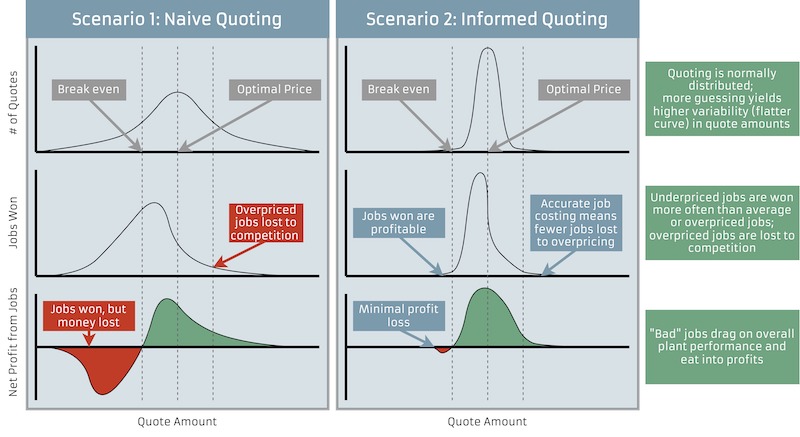Picture a used car lot. Take a moment and envision yourself walking through rows of pickups and SUVs.
 Marc MadiganNow, consider the salesperson who works at this imaginary dealership. They spot you from across the lot. You can see their smile as they wave and make a beeline for your position. What are you thinking?
Marc MadiganNow, consider the salesperson who works at this imaginary dealership. They spot you from across the lot. You can see their smile as they wave and make a beeline for your position. What are you thinking?
If you’re like most people, you might feel a little guarded and ready to take whatever this person has to say with a grain of salt. Used car dealerships, deservedly or not, have a reputation for withholding information about their inventory and offloading lemons on unsuspecting buyers.
In economics, the imbalance of information — and its exploitation— is called “Adverse Selection.” It’s more commonly known outside of economics as “getting cheated.” Most of us develop a sense of when this is taking place early in life; human beings have incredible instincts about fairness.
But unfortunately, that intuition breaks down fast once you expand the size and complexity of interactions. Contracted work includes so many factors that you often have no way to know your real job costs without specialized tools.
Quote at the Optimal Rate
 Click to enlargeMost jobs, profitable or not, begin with a quote. Quotes are typically clustered around an optimal rate, and businesses almost always choose to quote as close to their optimal rate as they can. If every job is accepted, the majority of job quotes generated this way will be profitable.
Click to enlargeMost jobs, profitable or not, begin with a quote. Quotes are typically clustered around an optimal rate, and businesses almost always choose to quote as close to their optimal rate as they can. If every job is accepted, the majority of job quotes generated this way will be profitable.
Job quoting is normally distributed, meaning that if you graph out the number of quotes with respect to the quote amounts, they form a familiar-looking bell curve shape with an average near the optimal price (scenario 1). Some jobs that are priced too high will be lost to competition. Other jobs, due to uncertainty in job costing methods, will be quoted close to the break-even point.
Sometimes, especially when there are a lot of unknowns or variables, jobs are accidentally quoted below the break-even point. More informed finishing and coating shops that have better estimates of their true costs can conduct more accurate job costing. The informed shop thus has less variability in their quoting, which gives a narrowed, more peaked curve (scenario 2).
It’s tempting to believe that if you’re right “on average,” you can still be competitive. The error in this thinking, though, is that while quoting is normally distributed, jobs won and financial impact are not. If you quote five jobs at above-average costs and five more below, you are much more likely to lose jobs you’ve overpriced and win jobs that you’ve underpriced (jobs won in chart). Sellers who offer naïve job quotes then suffer from the bias of the market towards accepting underpriced work, resulting in greater exposure to negative margins.
Even small improvements to job costing can yield large improvements on the bottom line. Knowing exactly how much you spend on labor, supplies, machine wear and tear, electricity, marketing, administration, and all the other little things gives you the ability to be meticulous in your quoting.
Profitable Quotes, but Not So High
To outcompete your peers and improve your bottom line, it is crucial to generate optimally priced quotes that are profitable but not so high that you lose to your competition on price.
Plant management software tools are designed to harness the information generated on your plant floor and give it back to you in an actionable form. More information in your management software means better job costing, which in turn means greater profitability.
In the last year, one Steelhead customer saw their gross profit margin climb from 5% to 35%. How was this possible? Here are some of the steps they took:
- They used actual plant data to adjust time estimates on masking and packaging; this improved the accuracy of future quotes.
- They reviewed jobs with negative margins and re-quoted subsequent runs to achieve target margins.
- They examined job cost data on small jobs and adjusted minimum job pricing accordingly.
- After finding optimal quantities for parts, they worked with customers to optimize target quantities to maintain customer piece cost while simultaneously hitting target margins.
Eventually, plant management tools will be recognized as indispensable, as much as computers or internet access. Those who use them already know the truth: they are indispensable today.
Marc Madigan is head of Documentation and Customer Success at Steelhead Technologies. Visit gosteelhead.com



































